A systematic mapping of funders of maternal health intervention research 2000-2012
- PMID: 25367638
- PMCID: PMC4243307
- DOI: 10.1186/s12992-014-0072-x
A systematic mapping of funders of maternal health intervention research 2000-2012
Abstract
Background: The priorities of research funding bodies govern the research agenda, which has important implications for the provision of evidence to inform policy. This study examines the research funding landscape for maternal health interventions in low- and middle-income countries (LMICs).
Methods: This review draws on a database of 2340 academic papers collected through a large-scale systematic mapping of research on maternal health interventions in LMICs published from 2000-2012. The names of funders acknowledged on each paper were extracted and categorised into groups. It was noted whether support took a specific form, such as staff fellowships or drugs. Variations between funder types across regions and topics of research were assessed.
Results: Funding sources were only reported in 1572 (67%) of articles reviewed. A high number of different funders (685) were acknowledged, but only a few dominated funding of published research. Bilateral funders, national research agencies and private foundations were most prominent, while private companies were most commonly acknowledged for support 'in kind'. The intervention topics and geographic regions of research funded by the various funder types had much in common, with HIV being the most common topic and sub-Saharan Africa being the most common region for all types of funder. Publication outputs rose substantially for several funder types over the period, with the largest increase among bilateral funders.
Conclusions: A considerable number of organisations provide funding for maternal health research, but a handful account for most funding acknowledgements. Broadly speaking, these organisations address similar topics and regions. This suggests little coordination between funding agencies, risking duplication and neglect of some areas of maternal health research, and limiting the ability of organisations to develop the specialised skills required for systematically addressing a research topic. Greater transparency in reporting of funding is required, as the role of funders in the research process is often unclear.
Figures
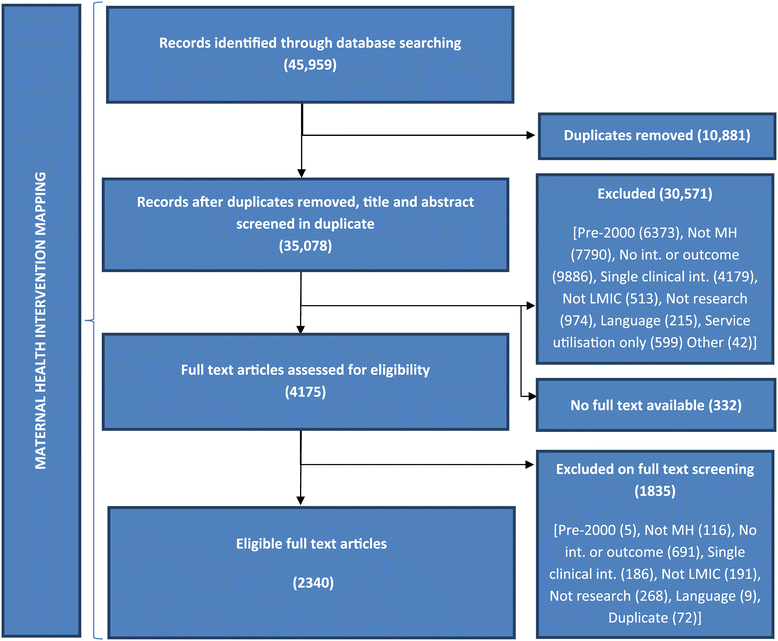

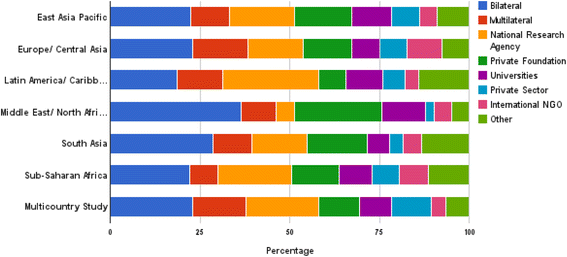
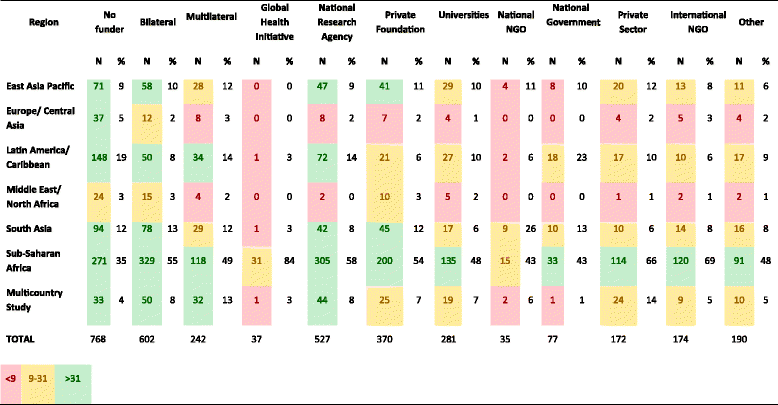
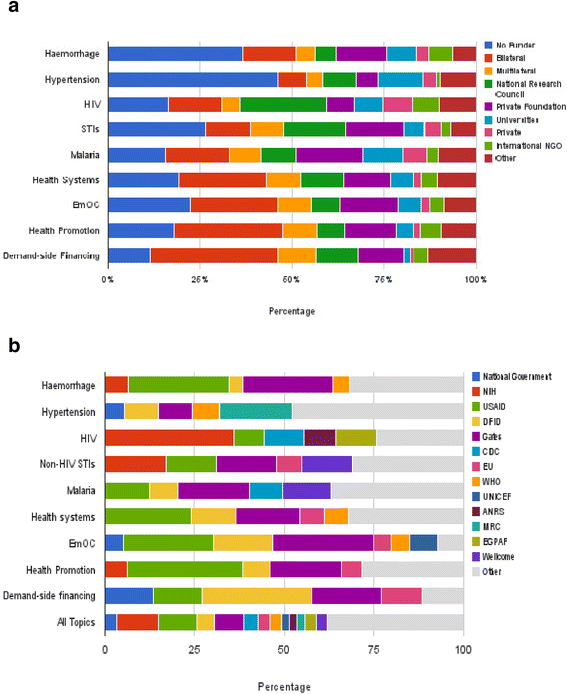
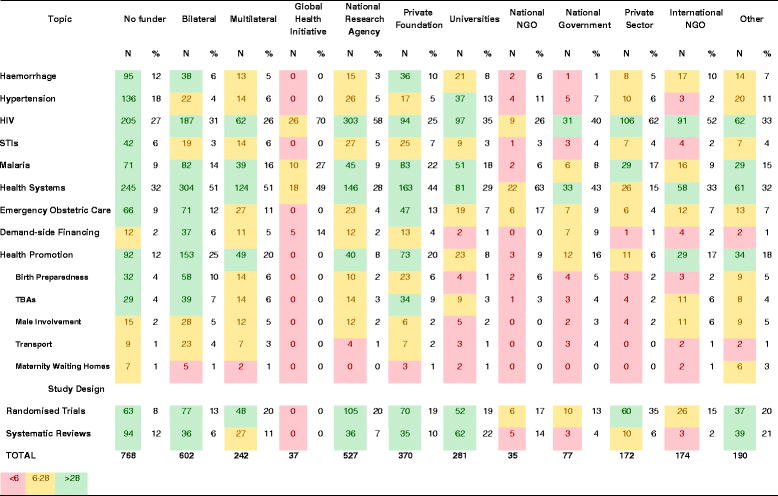
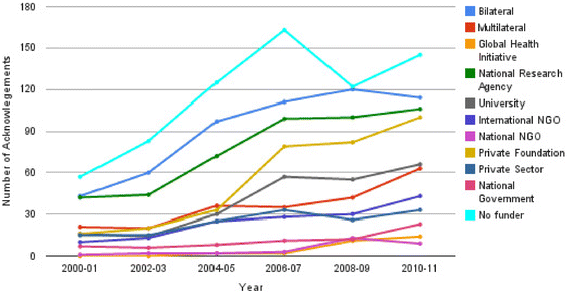
References
-
- World Health Organization. Research and development to meet health needs in developing countries: strengthening global financing and coordination: report of the consultative expert working group on research and development: financing and coordination. 2012.
-
- Commission on Health Research for Development: Health Research: Essential Link to Equity in Development. 1990. Available from: http://www.cohred.org/publications/open-archive/1990-commission-report/
Publication types
MeSH terms
Grants and funding
LinkOut - more resources
Full Text Sources
Other Literature Sources

